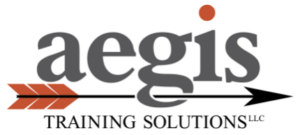In-Person Training
Aegis Training Solutions provides crisis intervention training and certification for mental and behavioral healthcare professionals in hospitals, residential treatment centers, and other organizations.

The Aegis System™ Price Structure
We believe that critical safety training should be affordable.
New Trainer Certification
$1,199
each person
Trainer Re-certification
$449
1 day commitment each year thereafter
Everything you need to train your staff is provided through secure online access in the Aegis Trainer Portal. Pricing includes:
- Access to the Aegis Trainer Portal
- Published Trainer Manual and Teaching Guide
- Participant handouts
- Supporting documents and staff certificate templates
- Instructional videos for each physical technique and classroom support
- PowerPoint Presentations
Our pricing is all-inclusive. There are no hidden fees. Unlike other training providers, Aegis does not charge extra for workbooks, training videos, certificates, or PowerPoint presentations.

“I just wanted to reach out as I did a presentation for the Building Bridges Initiative and one of the elements I focused on was a change in our de-escalation system which from our post-training surveys has found, 100% of our participants report improved confidence in identifying and addressing dysregulation in both themselves and in youth. All of our staff have additionally reported they feel these holds have led to increased safety in the only 7 days we have implemented. Your passion for wanting to see restraints be something very rarely used was also a pivotal thing and comes through clearly in training as there is so much more focus on prevention. As we navigate the intense scrutiny of restraints and our own level of not feeling great about them, it is so refreshing to work with a system who truly embodies the philosophy that restraints are harmful (even when done in the safest way possible) and should be avoided as best as we possibly can.”
Director of Quality and Risk in a Michigan Residential Treatment Facility
